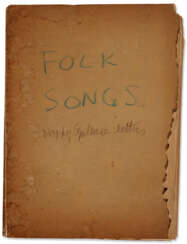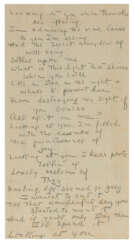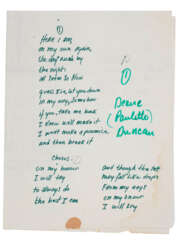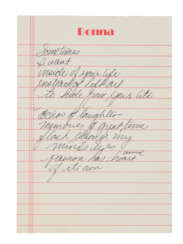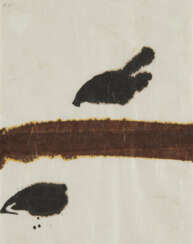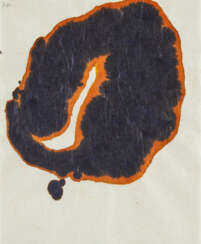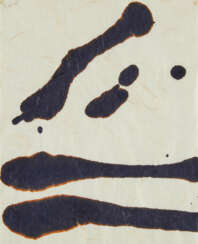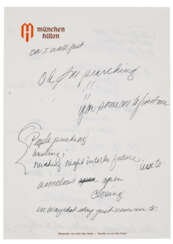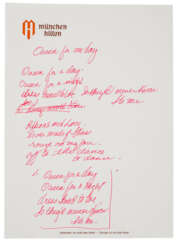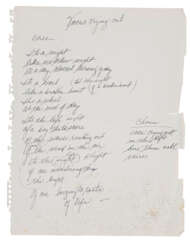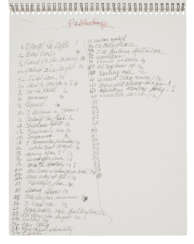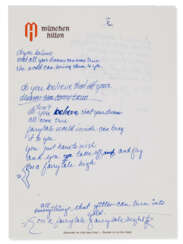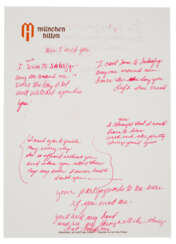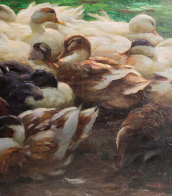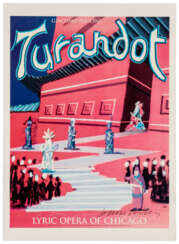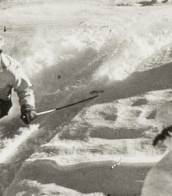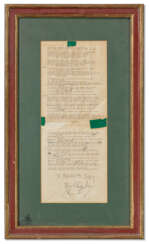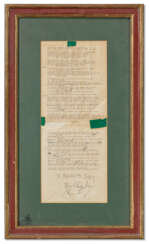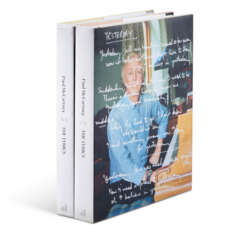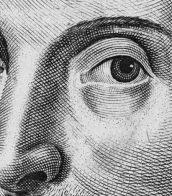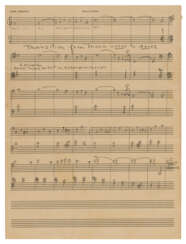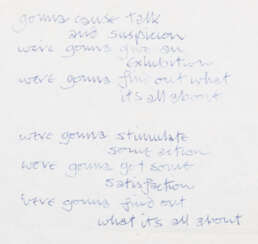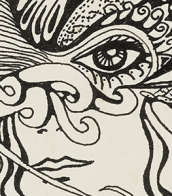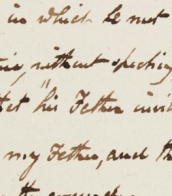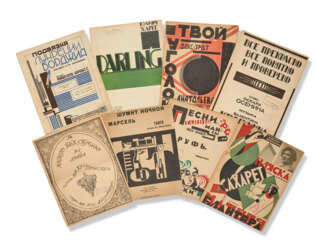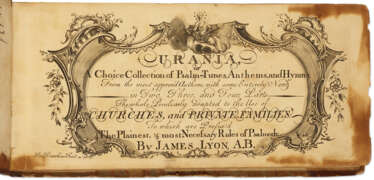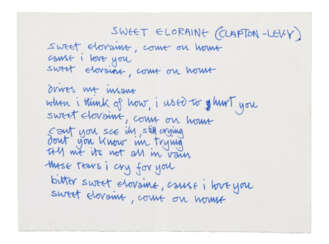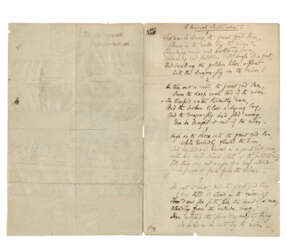lyrics
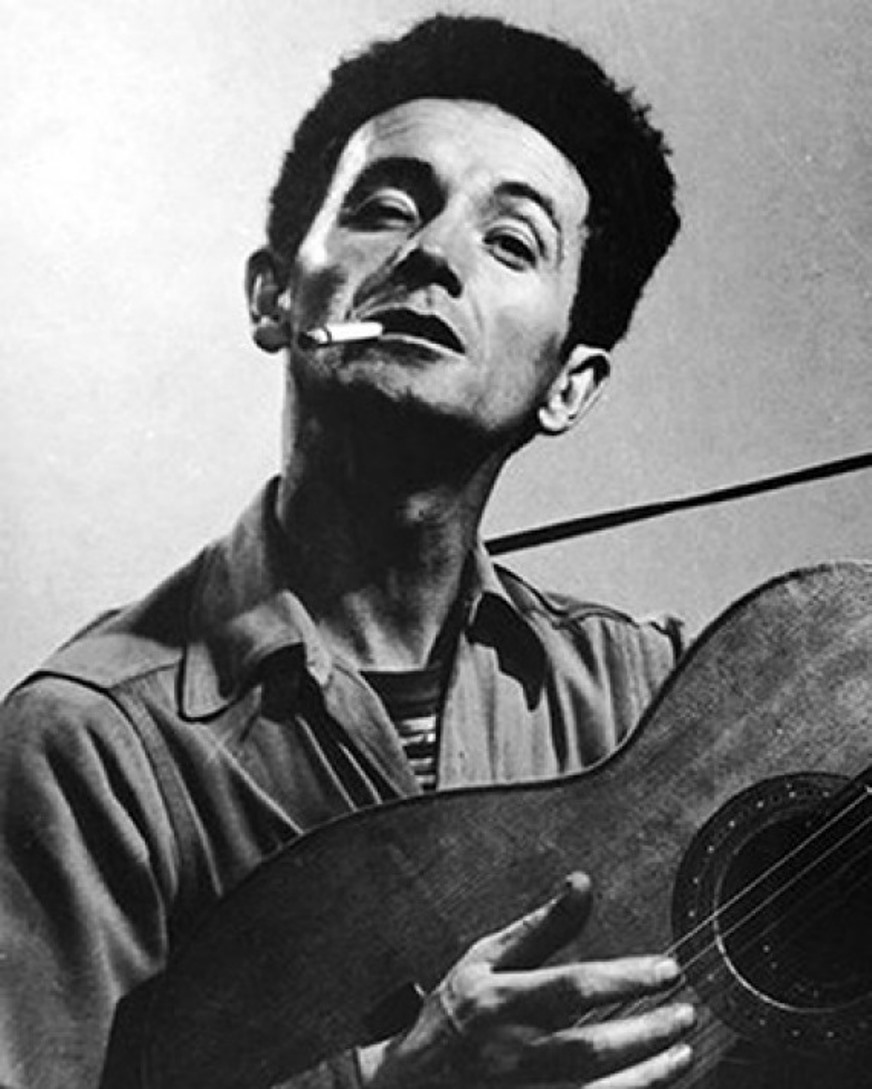
Woodrow Wilson Guthrie or Woody Guthrie is an American folk and country singer and musician.
Guthrie was born in difficult economic times in the United States. At first, he earned a living as a sign painter in different cities, traveling by hitchhiking. At the age of 20, he began learning to play guitar, playing in saloons and labor camps during the Great Depression. In his travels, the musician absorbed and performed many of the old folk ballads he heard around him and wrote many new songs reflecting the everyday joys and hardships of the ordinary people he met in his travels.
Guthrie was a major influence on folk and rock musicians from Bob Dylan to Wilco. Among Guthrie's best-known songs are Pastures of Plenty, Bound for Glory, and This Land is Your Land, the latter of which, due to its popularity, has become something of an "alternative national anthem" in the United States. In 1940, he recorded four hours of songs and stories for the Archive of American Folk Song at the Library of Congress (now the Archive of Folk Culture, American Folklife Center). Throughout the 1940s and 1950s, Guthrie had a high-profile career in radio broadcasting and recording.
Woody was a very prolific composer, writing thousands of songs. He also wrote an autobiographical novel, On the Road to Fame, and drew thousands of pen and ink drawings, many of which are now in the Ralph Rinzler Center's Folklife Archives and Collections.
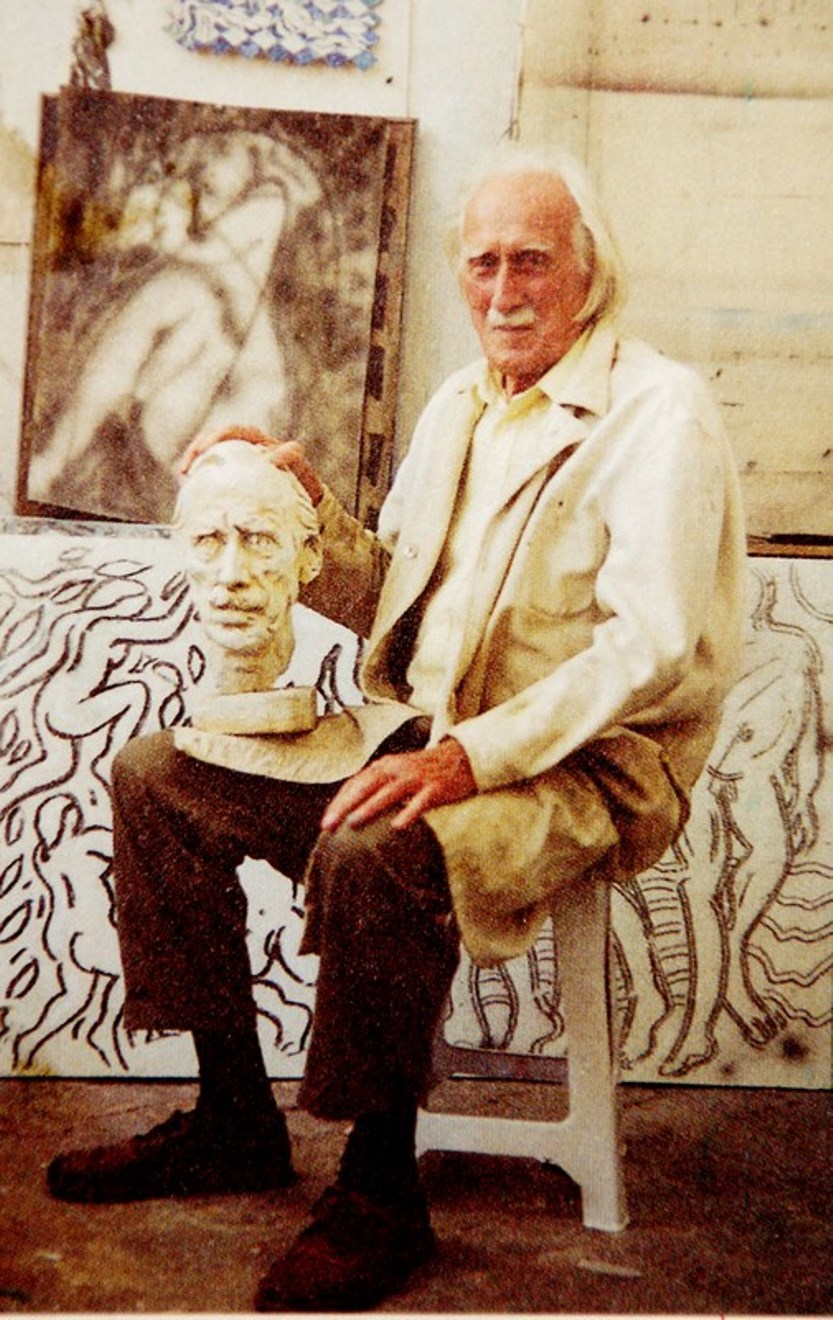
Harold Ambellan is an American painter and sculptor.
He studied sculpture and fine art in Buffalo before moving to New York City. The human figure is central to Harold Ambellan's work. He created monumental figures and drew extensively, leaving thousands of drawings. Ambellan was one of the participants in Roosevelt's Federal Art Project, which hired hundreds of artists during the Great Depression who collectively created more than 100,000 paintings and over 18,000 sculptures.
Ambellan remained committed to figuration in both his sculpture and painting. He was elected president of the Sculptors Guild of America in 1941, and that same year his work was exhibited in group shows at the Metropolitan Museum of Art in New York and the Academy of Fine Arts in Philadelphia.
In 1944, Ambellan participated in the liberation of Normandy as part of the U.S. Navy, then taught three-dimensional art at the Workshop School in New York City. In 1954, for political reasons, Ambellan moved to France and remained there for the rest of his life, working and exhibiting throughout Europe.

Robert Motherwell was an American artist and painter, renowned for his significant contributions to the Abstract Expressionism movement. Born in Aberdeen, Washington, in 1915, Motherwell's work is celebrated for its expressive use of form and color, which he utilized to convey deep emotional and philosophical themes. His approach to art was both intellectual and deeply personal, making him a pivotal figure in 20th-century art.
Motherwell's dedication to exploring the relationship between philosophy, literature, and visual art set him apart from his contemporaries. He was not just an artist but also an articulate spokesman for the Abstract Expressionist movement, emphasizing the importance of spontaneity and the expression of the subconscious. His series "Elegies to the Spanish Republic" is among his most famous works, exemplifying his skill in using black and white to evoke powerful emotions and reflections on human tragedy and resilience.
His art is held in high esteem worldwide, with pieces displayed in major museums and galleries, including the Museum of Modern Art (MoMA) in New York and the Tate Modern in London. Motherwell's ability to blend abstract elements with profound thematic content has made his work enduringly relevant to both collectors and scholars in the fields of art and antiques.
For those keen on delving deeper into the world of modern art and Abstract Expressionism, Robert Motherwell's oeuvre offers a rich vein of exploration. His works not only encapsulate the dynamism and innovation of mid-20th-century American art but also provide insight into the intellectual and emotional depths from which they sprang. To stay informed about new sales and auction events related to Robert Motherwell, sign up for our updates. This subscription is a gateway to the vibrant and evolving market of art collecting, ensuring you never miss an opportunity to engage with the legacy of this monumental artist.

Robert Motherwell was an American artist and painter, renowned for his significant contributions to the Abstract Expressionism movement. Born in Aberdeen, Washington, in 1915, Motherwell's work is celebrated for its expressive use of form and color, which he utilized to convey deep emotional and philosophical themes. His approach to art was both intellectual and deeply personal, making him a pivotal figure in 20th-century art.
Motherwell's dedication to exploring the relationship between philosophy, literature, and visual art set him apart from his contemporaries. He was not just an artist but also an articulate spokesman for the Abstract Expressionist movement, emphasizing the importance of spontaneity and the expression of the subconscious. His series "Elegies to the Spanish Republic" is among his most famous works, exemplifying his skill in using black and white to evoke powerful emotions and reflections on human tragedy and resilience.
His art is held in high esteem worldwide, with pieces displayed in major museums and galleries, including the Museum of Modern Art (MoMA) in New York and the Tate Modern in London. Motherwell's ability to blend abstract elements with profound thematic content has made his work enduringly relevant to both collectors and scholars in the fields of art and antiques.
For those keen on delving deeper into the world of modern art and Abstract Expressionism, Robert Motherwell's oeuvre offers a rich vein of exploration. His works not only encapsulate the dynamism and innovation of mid-20th-century American art but also provide insight into the intellectual and emotional depths from which they sprang. To stay informed about new sales and auction events related to Robert Motherwell, sign up for our updates. This subscription is a gateway to the vibrant and evolving market of art collecting, ensuring you never miss an opportunity to engage with the legacy of this monumental artist.

Robert Motherwell was an American artist and painter, renowned for his significant contributions to the Abstract Expressionism movement. Born in Aberdeen, Washington, in 1915, Motherwell's work is celebrated for its expressive use of form and color, which he utilized to convey deep emotional and philosophical themes. His approach to art was both intellectual and deeply personal, making him a pivotal figure in 20th-century art.
Motherwell's dedication to exploring the relationship between philosophy, literature, and visual art set him apart from his contemporaries. He was not just an artist but also an articulate spokesman for the Abstract Expressionist movement, emphasizing the importance of spontaneity and the expression of the subconscious. His series "Elegies to the Spanish Republic" is among his most famous works, exemplifying his skill in using black and white to evoke powerful emotions and reflections on human tragedy and resilience.
His art is held in high esteem worldwide, with pieces displayed in major museums and galleries, including the Museum of Modern Art (MoMA) in New York and the Tate Modern in London. Motherwell's ability to blend abstract elements with profound thematic content has made his work enduringly relevant to both collectors and scholars in the fields of art and antiques.
For those keen on delving deeper into the world of modern art and Abstract Expressionism, Robert Motherwell's oeuvre offers a rich vein of exploration. His works not only encapsulate the dynamism and innovation of mid-20th-century American art but also provide insight into the intellectual and emotional depths from which they sprang. To stay informed about new sales and auction events related to Robert Motherwell, sign up for our updates. This subscription is a gateway to the vibrant and evolving market of art collecting, ensuring you never miss an opportunity to engage with the legacy of this monumental artist.





Woodrow Wilson Guthrie or Woody Guthrie is an American folk and country singer and musician.
Guthrie was born in difficult economic times in the United States. At first, he earned a living as a sign painter in different cities, traveling by hitchhiking. At the age of 20, he began learning to play guitar, playing in saloons and labor camps during the Great Depression. In his travels, the musician absorbed and performed many of the old folk ballads he heard around him and wrote many new songs reflecting the everyday joys and hardships of the ordinary people he met in his travels.
Guthrie was a major influence on folk and rock musicians from Bob Dylan to Wilco. Among Guthrie's best-known songs are Pastures of Plenty, Bound for Glory, and This Land is Your Land, the latter of which, due to its popularity, has become something of an "alternative national anthem" in the United States. In 1940, he recorded four hours of songs and stories for the Archive of American Folk Song at the Library of Congress (now the Archive of Folk Culture, American Folklife Center). Throughout the 1940s and 1950s, Guthrie had a high-profile career in radio broadcasting and recording.
Woody was a very prolific composer, writing thousands of songs. He also wrote an autobiographical novel, On the Road to Fame, and drew thousands of pen and ink drawings, many of which are now in the Ralph Rinzler Center's Folklife Archives and Collections.

Harold Ambellan is an American painter and sculptor.
He studied sculpture and fine art in Buffalo before moving to New York City. The human figure is central to Harold Ambellan's work. He created monumental figures and drew extensively, leaving thousands of drawings. Ambellan was one of the participants in Roosevelt's Federal Art Project, which hired hundreds of artists during the Great Depression who collectively created more than 100,000 paintings and over 18,000 sculptures.
Ambellan remained committed to figuration in both his sculpture and painting. He was elected president of the Sculptors Guild of America in 1941, and that same year his work was exhibited in group shows at the Metropolitan Museum of Art in New York and the Academy of Fine Arts in Philadelphia.
In 1944, Ambellan participated in the liberation of Normandy as part of the U.S. Navy, then taught three-dimensional art at the Workshop School in New York City. In 1954, for political reasons, Ambellan moved to France and remained there for the rest of his life, working and exhibiting throughout Europe.

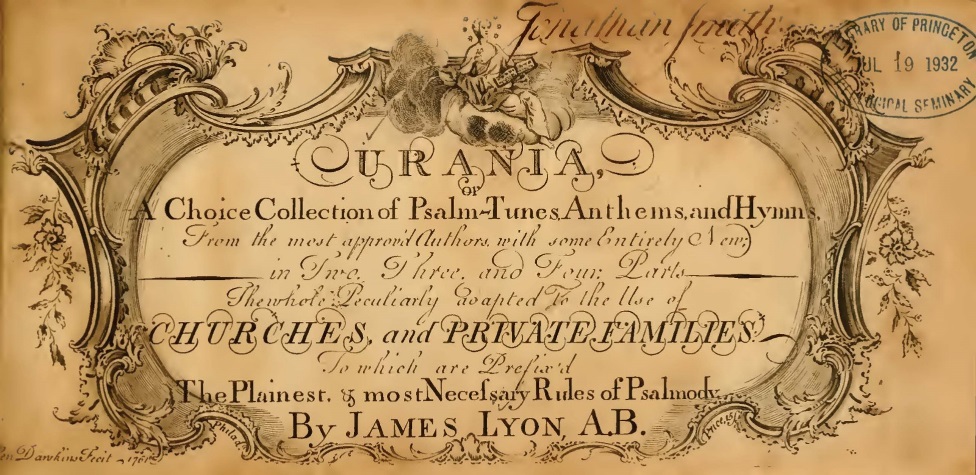
James Lyon was a clergyman and one of the first American composers.
James Lyon was one of the few composers in mid-eighteenth-century America. He earned a master's degree from the College of Philadelphia and became a Presbyterian minister. He is known to have begun writing music while still a student. While living in Philadelphia, Lyon published his Urania, or Select Collection of Psalms, Hymns, and Anthems, in 1761. It contained many English tunes as well as six original pieces by Lyon. Lyon is believed to be the author of the tune that eventually became the song "America (My Country 'Tis of Thee)."
He served the Congregational Church in Machias, Maine from 1771 until his death in 1794. James Lyon was an ardent and active patriot and even made George Washington a detailed proposal to conquer Nova Scotia.




